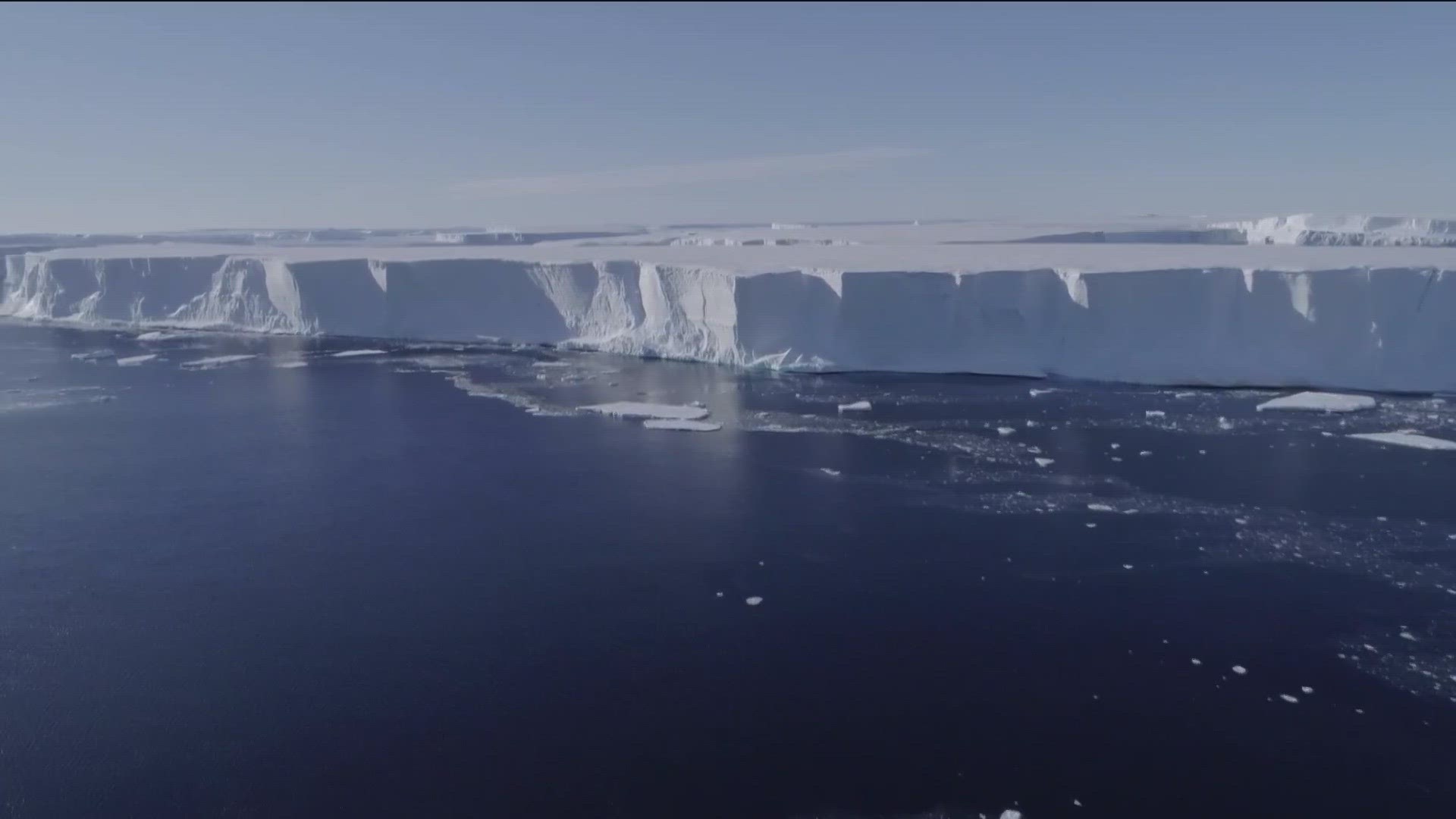SAN DIEGO — The Thwaites Glacier on Antarctica adds about 4% to sea level rise every year as it melts. The ice loss of the glacier, also known as the Doomsday Glacier, has doubled in the last 30 years and has some scientists thinking it could run out of control and raise sea levels by two feet over the next 100 years.
"We have satellites that, flown overhead and using magnetism, can tell the size of the ice mass," said Dr. Abbott who is a Professor of Geology Emeritus at San Diego State University. He says this is extremely important when it comes to the Thwaites Glacier in the Antarctic. "The ocean water there is cold, 34° to 35° but that's warmer than the ice, therefore, accelerating the melting of the ice that's floating on the ocean."
The ice on the ocean's surface is over 2,000 feet thick and is what is holding the Thwaites Glacier from flowing into the ocean, think of it like a dike or dam.
"The hundreds of feet thickness on ice floating there against the glacier on land helps make it stay on land. If you take that ice off there's nothing to hold the glacier on land, it flows downhill and into the ocean," explained Dr. Abbott.
With the ice sheet gone the melting rate could run out of control which is why it's called the Doomsday Glacier and has scientists concerned.
"We're worried about a runaway melting. It's a possible glacier that could run out of control and within a century raise sea levels as much as two feet," continued Dr. Abbott.
Because the ice shelf is not near any land masses, researchers have taken extraordinary steps to get more data.
The Thwaites Glacier is located on the western edge of Antarctica and is one of the largest in the world. It's where the ice shelf flows into the ocean and scientists already know that warm sea water is melting the ice from underneath, but they don't know if it will collapse. So, researchers have begun measuring the ice sheet from above, drilling through it, and using a robotic submarine look at the actual ice.
"They've gone out on the floating ice shelf and used hot water to bore a hole 2,000 feet down to get to see the water underneath," said Dr. Abbott.
IceFin is a robot that is able to give images back to the scientists as well as data, and they found the water under the glacier is fresh, which is colder than sea water, that's good, the problem with that is that it is flowing under the glacier from land.
"You tend to think of the bottom of the floating ice shelf as being flat surface, well there's areas that have a microtopography. That means there's more surface area, more sea water in contact with that and some of those areas are melting six times faster than others," said Dr. Abbott.
The takeaways from the latest research show the negatives include, topography under the ice sheet and fresh water melting under the glacier. The the good news is most of the ice sheet has fresh water under it, which slows the melting.
"Maybe our worst-case scenario is worse than reality, maybe it's not as bad as we fear it could be," said Dr. Abbott.
Watch Related: Interactive maps show projected sea-level rise across world (Nov 15, 2021)

